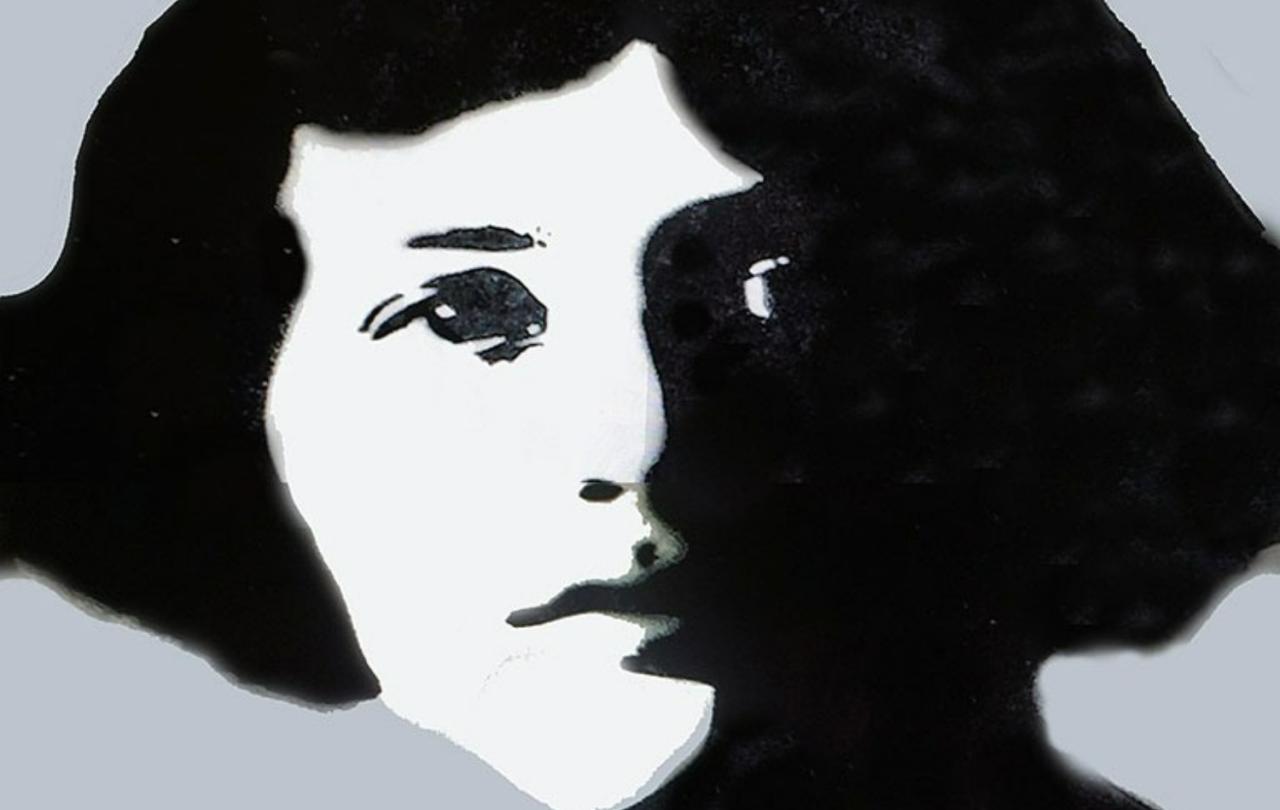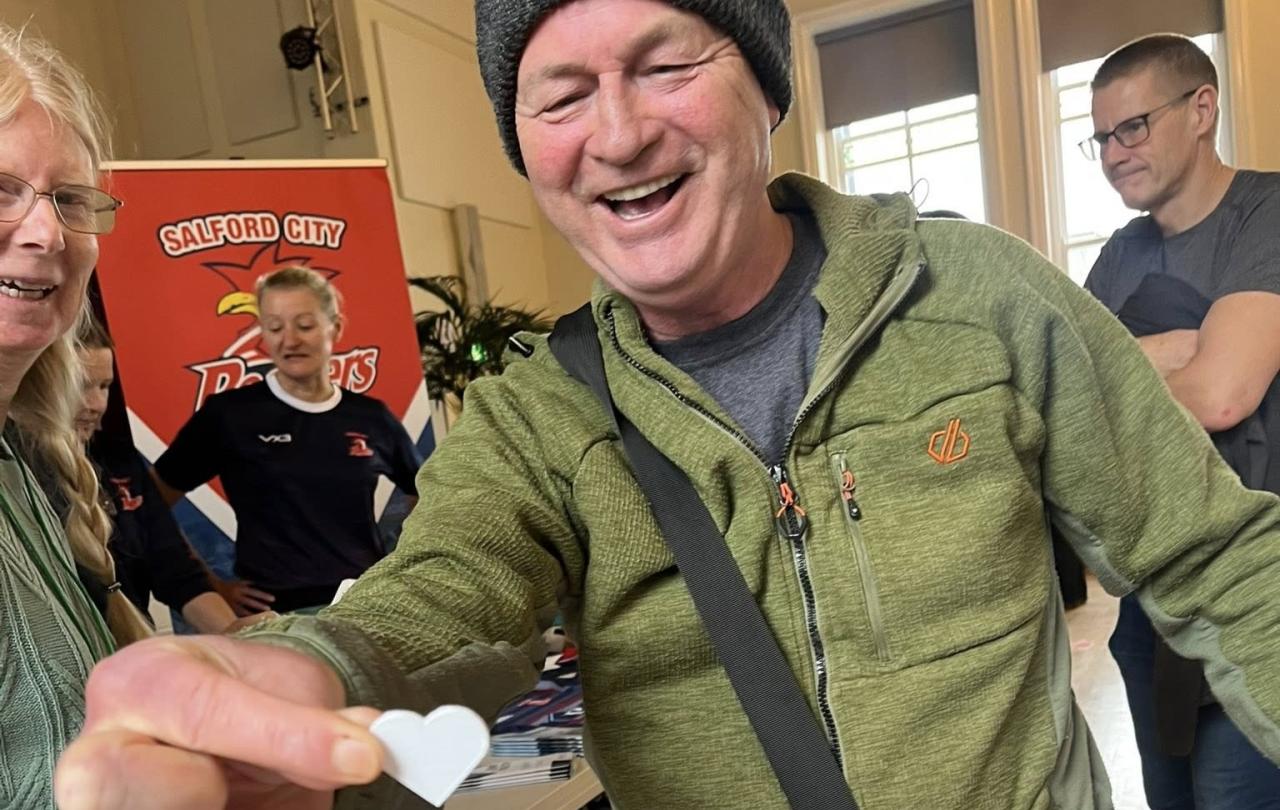
Your attention is a fragile thing.
Trouble is, we only learn this after it’s been frayed – as realised by anyone who’s ever emerged, bleary-eyed and regretful, from watching one too many Instagram reels. Not that our inability to look away is entirely on us. In an attention economy, trillions of dollars are to be made through exploiting our attention. It’s why some, like social critic Matthew Crawford, call upon us to preserve the “attentional commons” by treating attention as a public good like fresh air and clean water. His point: let’s use the not-so-renewable resource of our attention wisely. Be careful about what you pay attention to.
If you struggle with sustained focus – and, given corporate assaults upon it daily, how could you not – then it’s even more vital that you, well, attend to the life and work of Simone Weil (1909-1943).
The French philosopher, labour activist, and not-quite-Catholic mystic wrote passionately about the importance of attention and even the “miracle” of its occurrence when directed, deeply and lovingly, towards another person. Reading Weil against the chronic distraction of our times – the real product flogged by that attention economy – makes clear that even eighty years after her death, Weil couldn’t be more relevant.
But for Weil, ideas needed to be lived and experienced.
Weil’s life was short and difficult – often by choice. She grew up the younger sister of math prodigy André Weil in a comfortably middle-class, non-observant Jewish family in Paris. She had a first-rate education that set her up for a fairly cushy life as a teacher. But an encounter with then-classmate Simone de Beauvoir suggests a saint-in-waiting quality to the teenage Weil. Ever the idealist, she desired to feed the world’s starving millions. De Beauvoir, who recalls the exchange in her biography, was disinterested: finding the meaning of mankind’s existence was more important, she declared. “It’s easy to see you’ve never gone hungry,” retorted Weil.
They weren’t empty words, either: Weil often did go hungry out of solidarity with suffering others. (Indeed, her refusal to eat more than her French compatriots under occupation likely hastened her death). But for Weil, ideas needed to be lived and experienced. Her determined attempt to identify deeply with the plight of working people meant she put herself forward for repetitive, fatiguing factory work or manual labour on farms, even though, sickly and clumsy, she often became a liability.
There were other misadventures too: frustrated attempts to assist the Republican cause in the Spanish Civil War and, later, the French resistance during WWII. Few of these endeavours were fruitful but Weil was nothing if not committed to doing something, anything. Even if the outcome was uncertain and one wasn’t exactly fit for the task.
For Weil, to attend well to other people meant making their welfare and wellbeing central to our concerns.
It is in Weil’s writing about attention that we glimpse, perhaps, something of what drove her to put herself at the (frequently extreme) disposal of other people and causes she fervently believed in. In a now-famous essay on school studies, Weil makes a startling claim: the point of school is to teach us to pray – by which she meant: to attend, deeply, to whatever is before you.
The idea was that students would apply themselves to an endeavour that wouldn’t reveal its secrets so easily. As Weil saw things, wrestling with algebra and trying to follow its impossible logic simultaneously flexed and trained, if you like, our attentional muscles. Even if the equation was still impenetrable after an hour, “this apparently barren effort,” Weil declared, would still bring “more light into the soul”. Teaching students to persist through difficulty, she believed, would pay off far beyond the mastery of any school subject. It would, in fact, prepare people for the real business of life: paying attention other people. Not least because, as we learn soon enough, they can be way more infuriating than maths.
Even though Weil casts attention as prayer, God wasn’t to be the singular object of our attention. The plight of our neighbours was also to fill our gaze. For Weil, to attend well to other people meant making their welfare and wellbeing central to our concerns and bestowing on them the honour, love, and dignity they were due. It meant granting them the strange compliment of being real – or being a real person in the way we experience ourselves as real people – and then putting our own real selves at their disposal. This is why Weil called attention the “rarest and purest form of generosity”. It required the attentive person to, in a vivid phrase borrowed from Pope Francis, “remove our sandals before the sacred ground of the other”.
The experience of suffering and misfortune seems to exile someone from the rest of humanity, to undo them in some essential way that strips them of their humanness.
But the power of this attentive gaze goes still further. It has the power to rehumanise the dehumanised. As Weil writes:
The love of our neighbour in all its fullness simply means being able to say to him: “What are you going through?” It is a recognition that the sufferer exists, not only as a unit in a collection, or a specimen from the social category labelled “unfortunate,” but as a man, exactly like us, who was one day stamped with a special mark by affliction.
The experience of suffering and misfortune seems to exile someone from the rest of humanity, to undo them in some essential way that strips them of their humanness. Weil would go on to describe such a state as one of affliction – one she experienced, firsthand, as a factory worker. In a letter known as Spiritual Autobiography, she writes of the exhausting and gruelling nature of the work:
“There I received for ever the mark of a slave, like the branding of the red-hot iron which the Romans put on the foreheads of their most despised slaves.”
Affliction, then, is the person reduced to a “thing” by the experience of suffering and oppression. But here is the transformative power of attention: it is precisely what enables someone to recognise that the afflicted other is a person “exactly like us”.
Take, for instance, Weil’s reading of Jesus’ parable of the Good Samaritan, a tale perhaps broadly familiar to some. It describes an act of unexpected and radical compassion by a Samaritan, a social and ethnic outsider to a Jewish man robbed and left for dead.
Christian commentators often pay close attention to the attentive care the Samaritan shows to the beaten man: for them, the true test of the Samaritan’s neighbourliness. But Weil has a different focus. For her, the critical moral act was the fact that the Samaritan paid attention. He stopped and looked at the man who had become less of man and, nonetheless, gave “his attention all the same to this humanity which is absent”.
Weil calls this an act of “creative attention… [that gives] our attention to what does not exist.” Everything that then follows – the Samaritan pouring oil on the man’s wounds, taking him to a place where he will be cared for, and paying in advance for his keep – is almost beside the point, because it all depended on this first act. To be a neighbour, suggests Weil, is first of all to see.
Perhaps this is why Weil writes that paying attention to the suffering of another “is a very rare and difficult thing; it is almost a miracle; it is a miracle.” Attention, then, enacts a kind of a resurrection because it can bring the almost dead back to life.
The power of paying attention is that it can transform a lump of anonymous, misshapen flesh lying by the side of the road into the other person who is “exactly like us”, the other person who is as real as we are. The person who requires, from us, all the compassion we would wish to be shown if we were set upon by robbers on a lonely road.
Our entire attention economy is organised around helping us avoid the demands of other people. How many of us have retreated to the comfort of our screens to soothe our social anxiety
We’ve travelled a long way from where we started: with our difficulty focusing in an age of distraction and the all-too-familiar experience of giving our attention – which, as Weil has taught us, also means giving ourselves – to things that don’t always deserve it. But our own travails with attention have much to learn from Weil’s account of the moral, political, and spiritual charge of attention.
For one, she illuminates for us the determined inattention of our time. Our entire attention economy is organised around helping us avoid the demands of other people. How many of us have retreated to the comfort of our screens to soothe our social anxiety, or to numb the guilt we feel at failing to show up for people? It turns out that the loss of our focus and ability to concentrate is just the tip of the attentional iceberg. Also at stake is our ability to be present to the people we love, and even to be present to ourselves – and our pain.
Beyond that, there are many contemporary equivalents of the man of Jesus’ parable, first afflicted by suffering and then afflicted by the ease with which that suffering can be ignored. I write from Australia, in the recent aftermath of a defeated referendum on an Indigenous Voice to Parliament: an invitation, issued from the nation’s first peoples to their fellow citizens, to see their unique circumstances and grant them representation over policy matters directly affecting them. Lives are in the balance: the life outcomes of Aboriginal people are drastically worse than other Australian citizens. Now, to the loss of language, culture, country, and pride, comes a further blow: they will not be listened to, either.
They are not the only people we struggle to see. The lady with Alzheimer’s Disease, the illegal immigrant, the victim of family violence, the modern-day child slaves forced to mine cobalt to power our smartphones. It is profoundly difficult – and costly – for us to see them and recognise their claims upon us. To love others, as Jesus once enjoined his followers, as we love ourselves.
The vulnerable have always risked being overlooked and ignored. But Weil gives us eyes to see all this – and asks that we do not look away. “Those who are unhappy have no need for anything in this world,” she writes, “but people capable of giving them their attention.”





